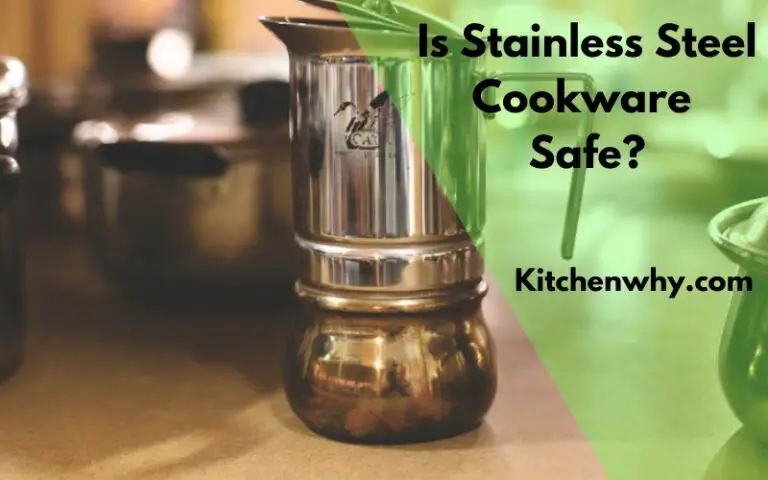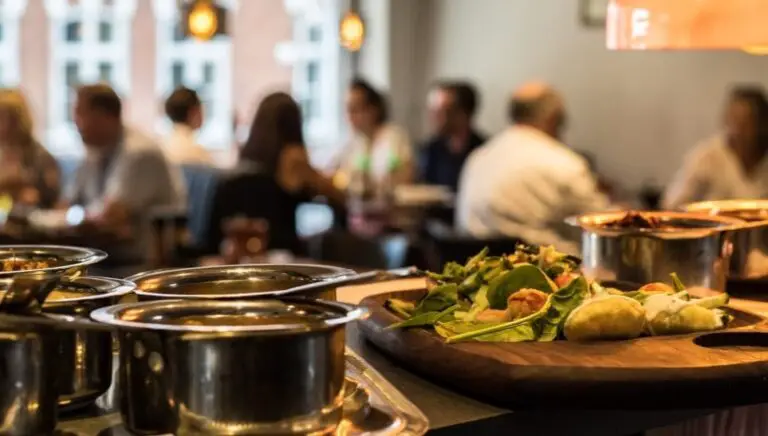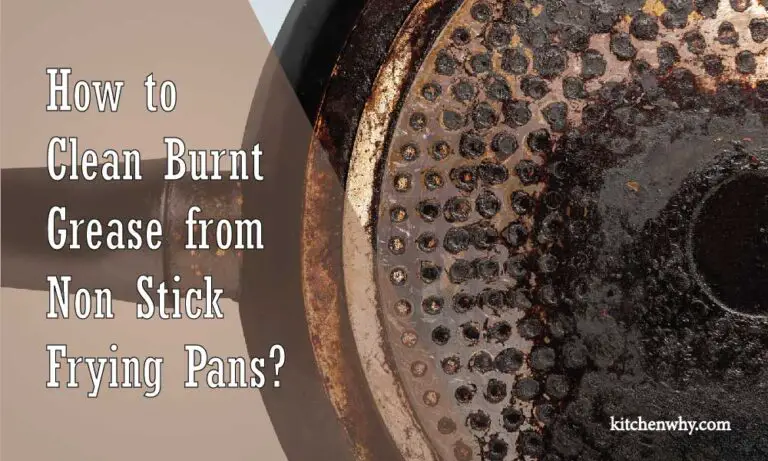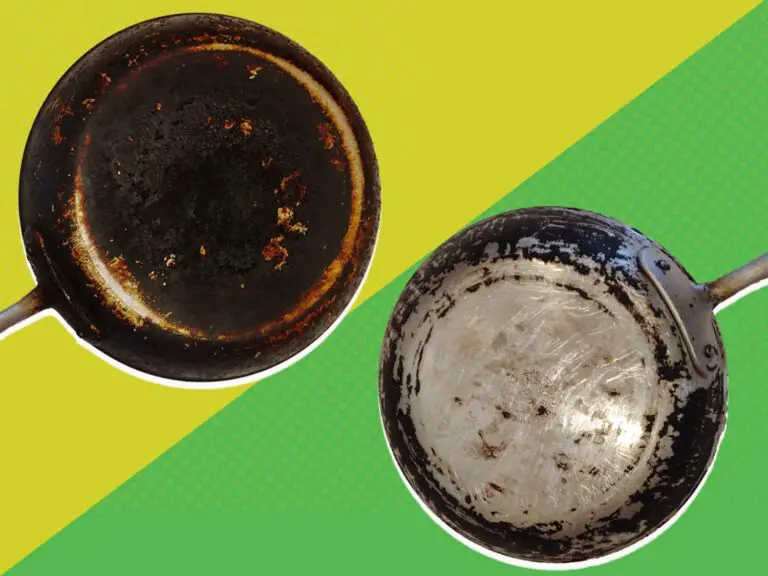How to Prevent Pressure Cooker Burning on Bottom: Quick and Easy Tips
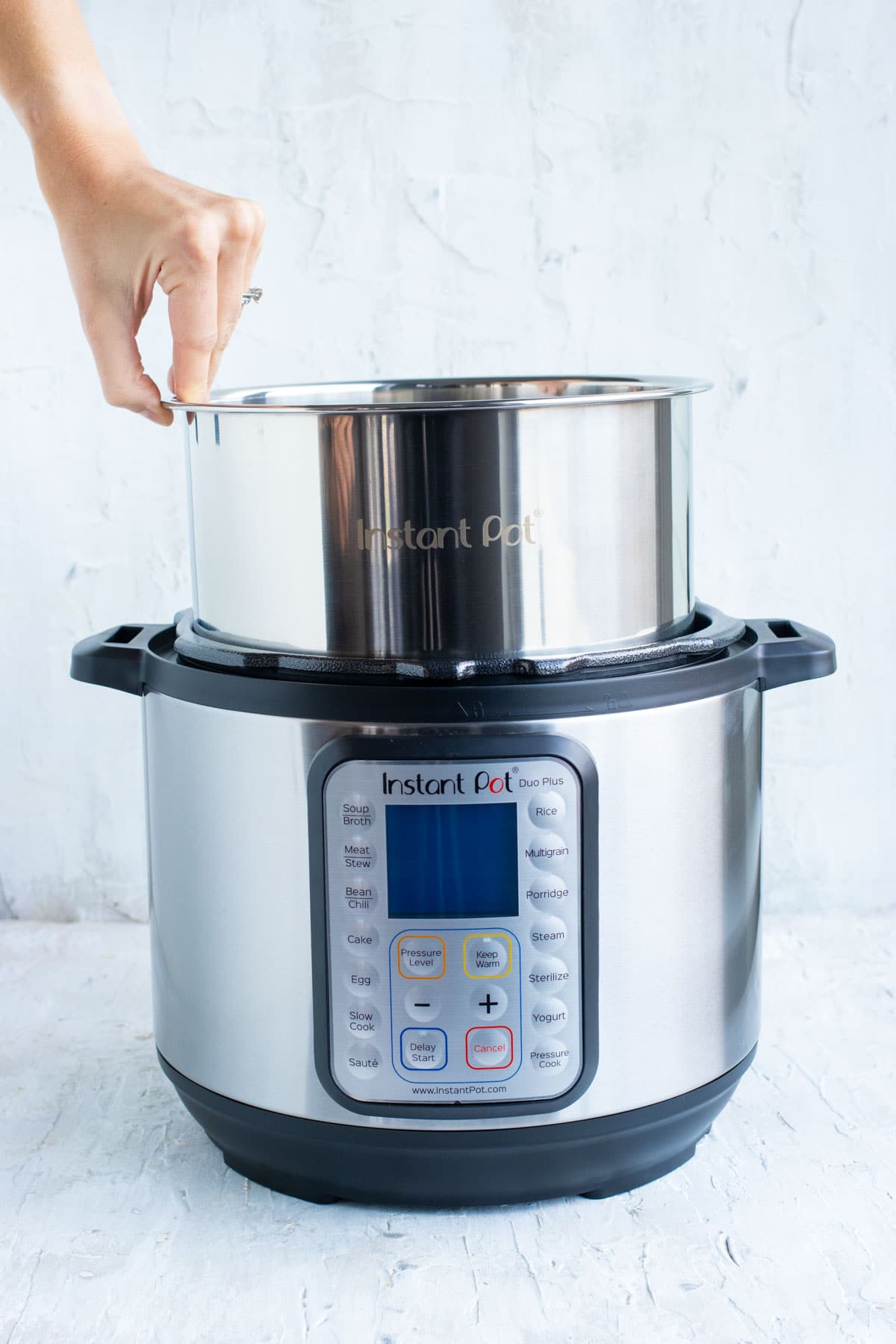
To stop pressure cooker burning on the bottom, adjust the heat and timing settings. Now, i will provide a well-rounded introduction to this topic.
A pressure cooker is a valuable kitchen tool that can significantly reduce cooking time. However, one challenge that many cooks face is the risk of burning food at the bottom of the cooker. This can not only ruin the meal but also make cleaning the pot a daunting task.
Luckily, there are several steps you can take to prevent this issue. In this article, we will explore effective techniques to stop pressure cooker burning on the bottom. By following these tips, you can ensure that your meals are cooked to perfection, without any burnt residue left behind. Let’s dive in and discover how to make the most of your pressure cooker without any burning mishaps.

Credit: kristineskitchenblog.com
Understanding The Causes Of Pressure Cooker Burning
Pressure cooker burning on the bottom can be frustrating, especially when you’re trying to cook a delicious meal in a hurry. Understanding the causes of this issue is key to preventing it from happening. In this section, we will explore two common culprits behind pressure cooker burning: overheating and lack of liquid, and improper placement of ingredients.
Let’s dive in:
Overheating And Lack Of Liquid
- Overheating: When the heat is too high in your pressure cooker, it can cause the food to stick to the bottom and ultimately burn. This can happen if you start the cooker at high heat and forget to reduce it once it reaches the desired pressure.
- Lack of liquid: Another contributing factor to pressure cooker burning is having insufficient liquid in the pot. Without enough liquid, the heat is not effectively distributed, leading to the food getting scorched. It is crucial to ensure that you always have enough liquid, whether it is water, broth, or any other cooking liquid, as specified in the recipe.
Improper Placement Of Ingredients
- Uneven distribution: Placing ingredients unevenly in the pressure cooker can result in hot spots and uneven cooking, ultimately leading to burning. Ensure that you evenly distribute the ingredients throughout the pot to promote consistent heat distribution and avoid burning.
- Layering ingredients: Layering ingredients is a common technique when using a pressure cooker. However, if the ingredients are not layered properly, the bottom layer may be more prone to burning. When layering, make sure to place ingredients that require longer cooking times on the bottom and quicker-cooking items on top.
Preventing pressure cooker burning on the bottom involves understanding these causes and taking appropriate measures to address them. By maintaining the right heat level, adding sufficient liquid, and properly placing ingredients, you can enjoy perfectly cooked meals without any burning mishaps.
Selecting The Right Pressure Cooker
Are you tired of your pressure cooker burning at the bottom and ruining your meals? Well, fear not! By selecting the right pressure cooker, you can ensure that your cooking experience is both safe and efficient. Let’s delve into the key factors you should consider when choosing a pressure cooker.
Choosing The Right Size And Capacity
When it comes to pressure cookers, size matters. Consider these key points:
- Opt for a size that suits your cooking needs. Whether you’re cooking for a small family or a larger gathering, choose a pressure cooker with a capacity that matches your requirements.
- Keep in mind that pressure cookers are available in various sizes, ranging from 4 quarts to 8 quarts or more. Assess your typical meal preparations to determine the ideal size for your kitchen.
Opting For Quality Materials
The materials used in a pressure cooker can significantly impact its performance. Take note of the following:
- Stainless steel pressure cookers are durable, resistant to corrosion, and are fantastic for browning and sautéing ingredients before pressure cooking.
- Aluminum pressure cookers are lightweight, affordable, and offer excellent heat conductivity. However, they may not be suitable for acidic foods due to potential reactions.
Ensuring Safety Features
Safety should always be a top priority when selecting a pressure cooker. Here are some essential safety features to look out for:
- Pressure release valves: These valves allow excess pressure to escape to prevent accidents.
- Locking systems: Look for cookers with secure locking mechanisms to prevent opening while under pressure.
- Pressure indicators: Opt for pressure cookers with clear indicators that show when it is safe to open the cooker.
Finding the right pressure cooker can make all the difference in preventing burnt meals and ensuring a pleasant cooking experience. Consider the size and capacity, quality materials, and safety features offered by different models. By carefully selecting the right pressure cooker for your needs, you can enjoy perfectly cooked dishes without any burning mishaps.
Happy cooking!
Preparing Ingredients For Pressure Cooking
Pressure cooker burning on the bottom is a common issue many home cooks face. The good news is that there are steps you can take to prevent this problem and ensure your meals come out perfectly cooked every time. In this section, we will focus on the importance of properly cleaning and cutting ingredients, adjusting liquid ratios, and using suitable cooking techniques when pressure cooking.
Properly Cleaning And Cutting Ingredients
- Cleaning the ingredients thoroughly before cooking is crucial to remove any dirt or impurities that may affect the taste and texture of the final dish.
- It is equally important to cut the ingredients into uniform sizes to ensure even cooking in the pressure cooker.
- Remember to remove any tough stems, seeds, or skin that can hinder the cooking process.
Adjusting Liquid Ratios
- One of the key factors in preventing pressure cooker burning on the bottom is getting the liquid ratios right.
- Always refer to the recipe guidelines for the recommended amount of liquid required for the specific ingredient or dish you are cooking.
- Keep in mind that certain ingredients, such as grains and legumes, require more liquid than others to cook properly in a pressure cooker.
- Be cautious not to add too much liquid as it can lead to overcooking and make your dish watery.
Using Suitable Cooking Techniques
- Choosing the right cooking technique is essential for preventing burning on the bottom of the pressure cooker.
- For ingredients that tend to stick or scorch easily, consider using a steaming insert or a trivet to elevate them above the cooking liquid.
- Sautéing or searing certain ingredients before pressure cooking can also help enhance the flavors and prevent burning.
- Additionally, it is crucial to follow the recommended cooking time and release method for each ingredient to achieve the desired results.
By following these guidelines for preparing ingredients in your pressure cooker, you can avoid burning and create delicious meals with ease. Remember to clean and cut your ingredients properly, adjust liquid ratios accordingly, and use suitable cooking techniques for optimal results.
With a little practice and attention to detail, you’ll be able to enjoy perfectly cooked dishes every time you use your pressure cooker.
Using And Adjusting Heat Settings
Pressure cooker burning on the bottom can be frustrating and lead to charred or ruined meals. However, with a few adjustments to your heat settings, you can prevent this problem and ensure your pressure cooker operates smoothly every time. In this section, we will explore the key steps to take when utilizing and modifying heat settings to stop pressure cooker burning on the bottom.
Let’s dive in and discover the essentials of using heat effectively in your pressure cooker.
Understanding Pressure Levels
- Familiarize yourself with the different pressure levels offered by your cooker. Most pressure cookers have two settings: High pressure and low pressure.
- High pressure is ideal for cooking food quickly, while low pressure is suitable for delicate dishes that require slower cooking times without burning. Ensure you understand which pressure level to use for specific recipes to avoid burning on the bottom.
Modifying Heat Intensity
- In some pressure cookers, you may need to adjust the heat intensity manually. Here are a few tips to help you navigate this adjustment effectively:
- Start by heating the cooker over high heat until it reaches the desired pressure level.
- Once the desired pressure is achieved, reduce the heat to low or medium-low to maintain the pressure consistently throughout the cooking process.
- Pay attention to the manufacturer’s instructions regarding heat adjustment to prevent excessive heat that may lead to burning on the bottom of your pressure cooker.
Employing Timers And Alarms
- Utilizing timers and alarms can be a game-changer when it comes to avoiding pressure cooker burning on the bottom. Here’s how you can leverage these tools effectively:
- Set a timer for the cooking duration specified in your recipe. This ensures that you don’t accidentally overcook your meal and cause it to burn on the bottom.
- Some pressure cookers come equipped with built-in alarms that alert you when the desired pressure is reached or when excessive pressure is detected. Take advantage of these features, as they provide an extra layer of safety and help prevent burning incidents.
Incorporating these techniques into your pressure cooking routine will help you avoid that dreaded burnt layer on the bottom of your dishes. Understanding pressure levels, adjusting heat intensity accordingly, and making use of timers and alarms are key steps to ensuring a successful and burn-free pressure cooking experience.
With these tools in your culinary arsenal, you can confidently whip up delicious meals in your pressure cooker, free from any scorching mishaps.
Monitoring And Maintaining The Pressure Cooker
A pressure cooker is a fantastic kitchen tool for faster cooking times and tender, flavorful meals. However, occasionally, pressure cookers can burn on the bottom, causing frustration and potentially ruining your dish. To prevent this from happening, it’s important to monitor and maintain your pressure cooker regularly.
By following a few simple steps, you can ensure that your pressure cooker functions optimally and avoids burning on the bottom. Let’s explore these steps in detail.
Regularly Checking The Sealing Ring And Safety Valve
- Inspect the sealing ring: The sealing ring is a crucial component of the pressure cooker that helps create a tight seal and maintain pressure. Regularly check the sealing ring for any signs of damage or wear. If you notice any cracks, tears, or distortion, it’s time to replace it with a new one.
- Ensure proper sealing: Before each use, ensure that the sealing ring is properly fitted and seated in its groove. A loose or incorrectly positioned sealing ring can lead to steam leakage and burning on the bottom.
- Clean and lubricate the sealing ring: Over time, the sealing ring can collect residue and become sticky, compromising its effectiveness. Clean the sealing ring thoroughly after each use using warm soapy water, and dry it completely before reassembling. Additionally, applying a small amount of cooking oil can help maintain its flexibility.
Cleaning And Removing Residue From The Bottom
- Scrub off stubborn stains: If you notice burnt-on residue on the bottom of your pressure cooker, it’s crucial to remove it to prevent future burning. Use a non-abrasive scrub brush or sponge to gently scrub away the stains. Avoid using harsh chemicals or abrasive cleaners that can damage the cooker’s surface.
- Soak in warm water and vinegar: For stubborn residue, create a mixture of warm water and vinegar and allow the pressure cooker to soak for a few hours or overnight. The vinegar’s acidity will help loosen the residue, making it easier to scrub away.
- Regular deep cleaning: Periodically perform a deep cleaning of your pressure cooker. Disassemble removable parts, such as the lid, sealing ring, safety valve, and any other accessories, and clean them thoroughly using warm soapy water. Wipe down the inner pot and exterior of the cooker with a damp cloth.
Performing Routine Maintenance
- Inspect the safety valve: The safety valve is responsible for releasing excess pressure and ensuring the pressure cooker remains safe. Regularly inspect the safety valve and ensure it moves freely and without obstruction. Clean the valve to remove any debris or buildup that may hinder its functionality.
- Check the pressure release mechanism: The pressure release mechanism, whether it’s a quick-release valve or a natural release method, should be regularly tested to ensure it’s working correctly. Proper pressure release prevents overcooking and potential burning on the bottom.
- Maintain a clean cooking surface: Before each use, thoroughly clean the bottom of the pressure cooker to remove any residual food or debris. A clean cooking surface promotes even heat distribution and reduces the risk of burning.
By regularly monitoring and maintaining your pressure cooker, you can minimize the chances of burning food on the bottom. These simple steps will not only extend the lifespan of your pressure cooker but also ensure safe and efficient cooking every time.
So, make it a habit to check the sealing ring and safety valve, clean the residue from the bottom, and perform routine maintenance for a hassle-free cooking experience.
Frequently Asked Questions On How To Stop Pressure Cooker Burning On Bottom
How Do You Prevent A Pressure Cooker From Burning On The Bottom?
To prevent a pressure cooker from burning on the bottom, make sure to always add enough liquid, monitor the temperature, and use the correct cooking time.
Why Does A Pressure Cooker Burn On The Bottom?
A pressure cooker may burn on the bottom if there is not enough liquid or if the heat is too high. It can also happen if the cooker is not properly sealed.
Can I Use Oil To Prevent The Pressure Cooker From Burning?
While oil can be used to prevent sticking, it is not recommended to use oil solely to prevent burning on the bottom of a pressure cooker. Ensure proper liquid levels.
How Can I Adjust The Heat To Prevent Burning?
Adjust the heat on your stove to prevent burning by using a lower setting or moving the pressure cooker to a different burner that provides more even heat distribution.
Are There Any Alternative Methods To Prevent Burning In A Pressure Cooker?
Yes, you can try using a heat diffuser or adding a heat conductor, such as a heatproof plate or a trivet, to distribute the heat more evenly and prevent burning on the bottom.
Conclusion
In a nutshell, preventing pressure cooker burning on the bottom is crucial for a successful cooking experience. By following these simple yet effective techniques, you can ensure that your meals are cooked evenly and without any unpleasant burnt taste. Firstly, adjust the heat appropriately and always use the recommended amount of liquid.
Secondly, make sure the sealing ring is properly intact and fits tightly. Thirdly, release pressure gradually and avoid quick release methods. Additionally, keeping the bottom of the cooker clean and free from residue will also help prevent burning. Lastly, regular maintenance and replacing worn-out parts will extend the lifespan of your pressure cooker and reduce the chances of burning.
By implementing these tips, you can say goodbye to burnt meals and enjoy perfectly cooked dishes with your pressure cooker every time. Happy cooking!



